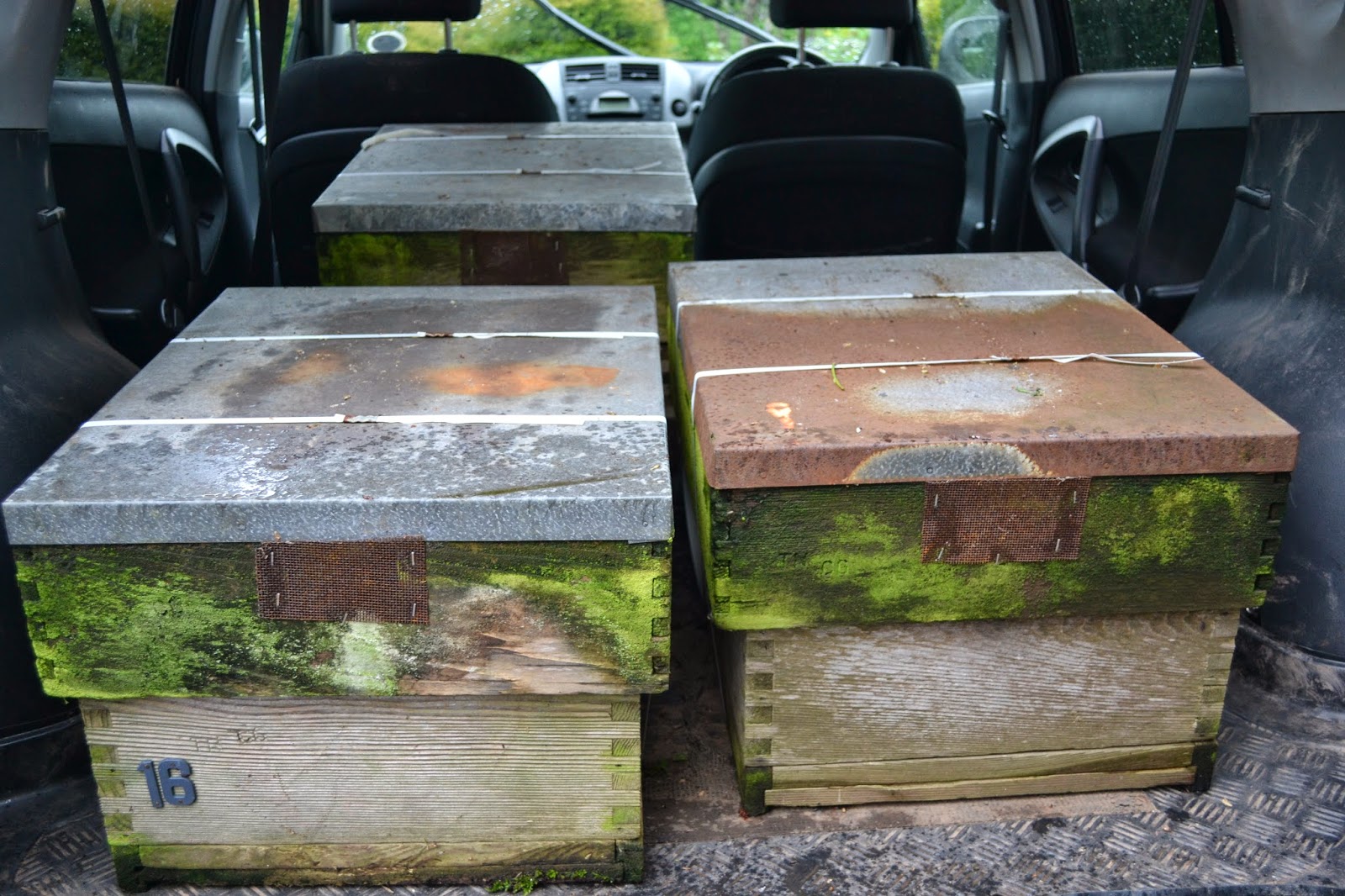The bees have arrived.
The
weather is rough today so what better way to spend the morning than to drive
over to Cardiff to pick up our new guests. 3 hours later and we have 3
Langstroth hives with bees 'of no particular pedigree' waiting to be sited.
David placed a couple of slabs in the apiary at the weekend so we are good to
go. My only reservation being the conflict of sizes. We are hoping to rehouse
the bees in Warres which are a good bit smaller so the slabs have been
purchased with them in mind rather than the larger Langstroth. Let's hope
there's no wobbling.
Key things to remember when transporting bees: traditionally it is held that you can move bees more than 3 miles or less than 3 feet during their active periods. More than 3 miles guarantees the bees will not enter onto any previously formed flight paths and therefore should not be tempted to return to their old site. Less then 3 feet and they should still be able to locate the scent of their colony. In winter you can move them readily wherever necessary.
Like other creatures, bees need to breathe so a good heavy duty gauze pinned to the doorway should ensure your drive is not interrupted by escapees. Trust me when I say that is not a funny situation!
The bees' new home
 |
| Although not considered as useful to the honeybee as the foetida the Hellebore nudiflora offers early pollen. |
 |
| The new arrivals waiting to be released. |
 |
| As a general rule of thumb, flowers with many whorls of petals are likely to have sacrificed their nectaries for flower power. Floribundas are therefore less attractive to honey bees. |
Among the wild flowers which have seeded themselves successfully can be found some cultivated garden flowers. Pot marigolds and wallflowers grow side by side with the lesser celandines and dandelions.
 For more information on good plants to attract wildlife to your garden try these sites: http://www.rhs.org.uk/science/pdf/conservation-and-biodiversity/wildlife/rhs_pollinators_plantlist http://www.buzzaboutbees.net/wildflowers-and-natives.html
13th May 2014
The second hive is constructed and positioned with the adapter and Langstroth. As is ever the case the bees have found all the nooks and crevices and I suspect are not using the intended doorway as much as they should be.
|


Great to see so many of the flowers are out! Lucky bees!
ReplyDeleteI have been nurturing dandelions most fastidiously but there is obviously something more appealing close by. :)
Delete